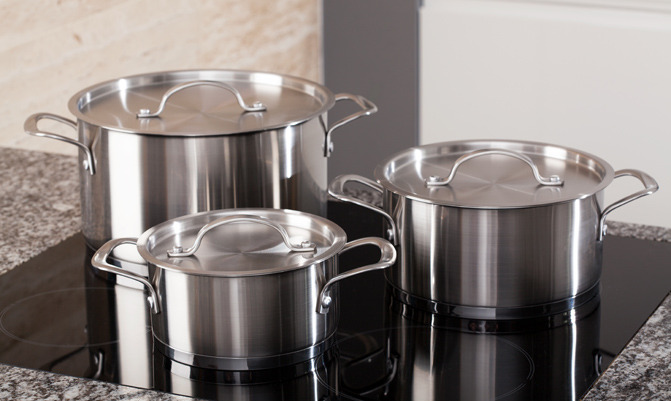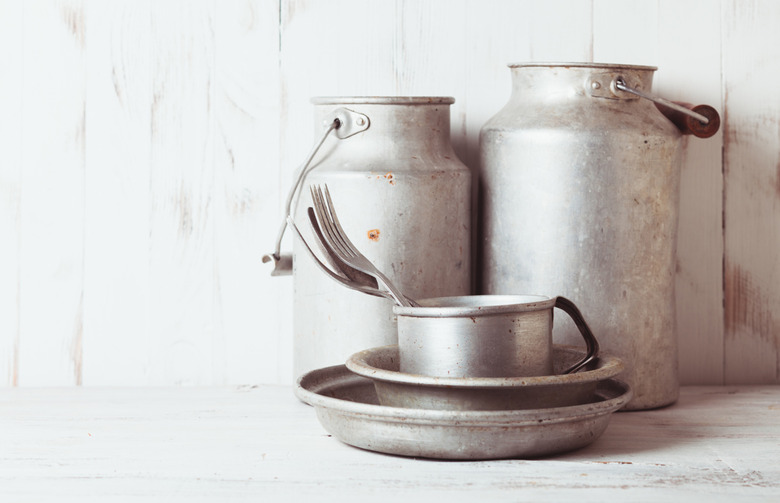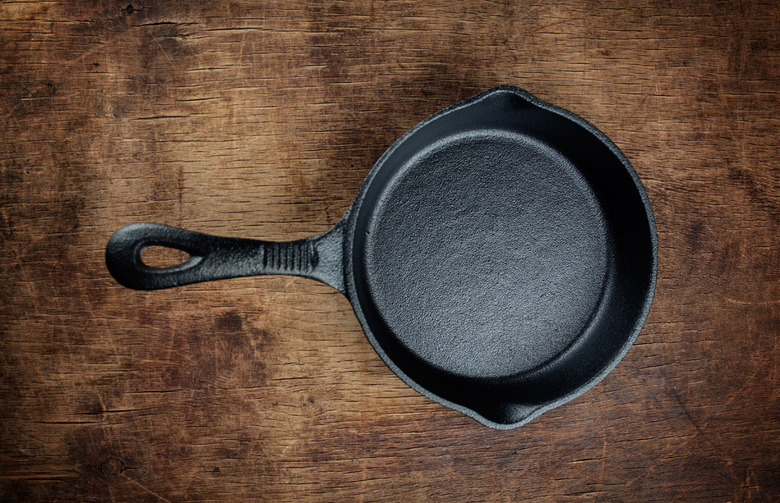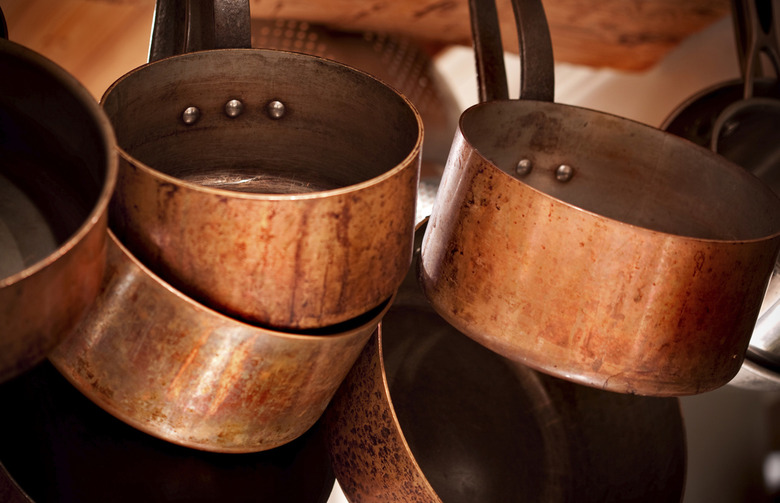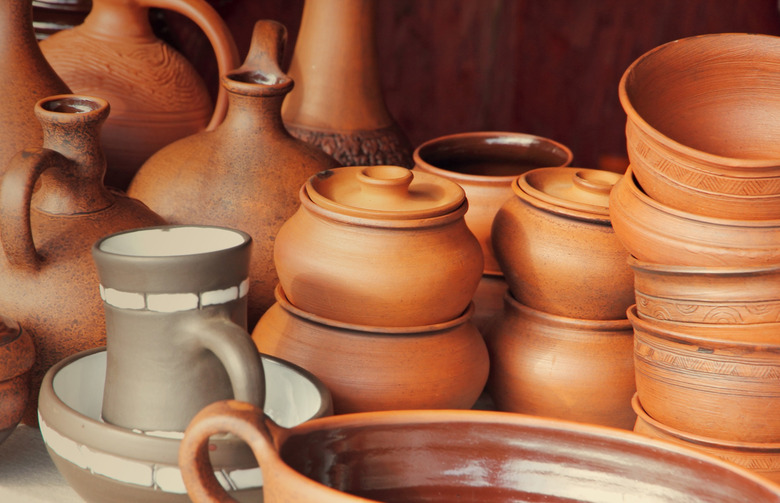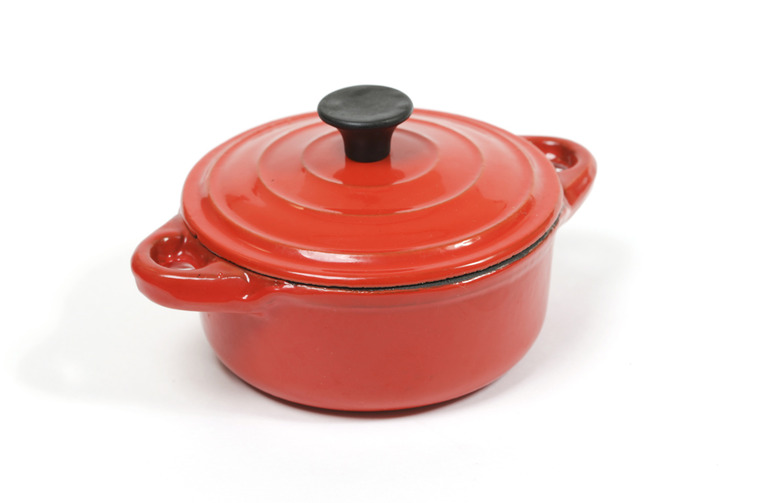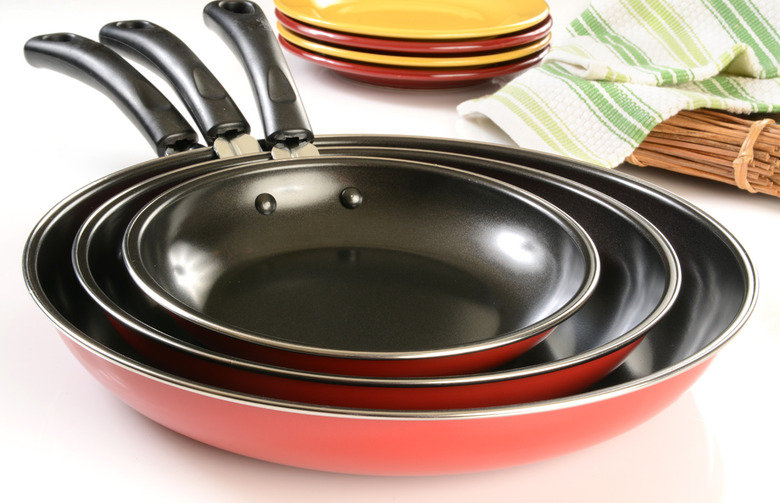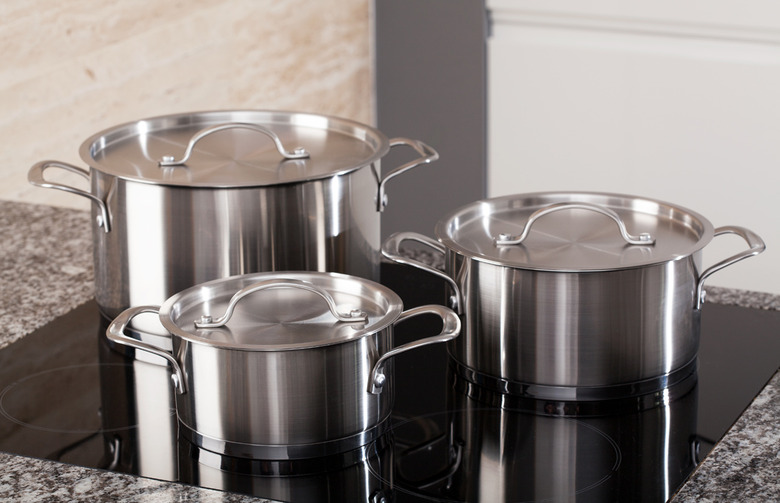Hand-Wash Or Not? Are You Cleaning Your Cookware All Wrong?
Clean your cookware with confidence using this handy guide.
Aluminum
Most aluminum cookware can be divided into one of two categories: aluminum alloy cookware (fortified with metals like magnesium, copper, or bronze for added strength) and anodized aluminum cookware (which reacts less with acidic foods). Anodized aluminum cookware is generally dishwasher safe, but aluminum alloy cookware should be washed by hand.
Need to remove a stain from your aluminum cookware? Make a cleaning solution by mixing two teaspoons of white vinegar with two cups of water. Pour the solution into the pot, bring it to a boil for two minutes, and then rinse the pot with lukewarm water.
Cast-Iron
The key to keeping cast iron clean and rust-free is to clean the pan while it is still warm and to buff it with a very thin layer of oil after cleaning. Start by washing your cast-iron cookware in hot water (no soap needed) with a stiff brush or a durable sponge. Don't use steel wool, as it can ruin the seasoning on your pan. Then, dry the pan thoroughly with a clean towel before rubbing a thin layer of vegetable oil over the surface of the pan. Buff off any excess oil with a paper towel and store your cast-iron pan in a dry place.
Need to remove stuck-on pieces of food? Try boiling a small amount of water in your cast-iron cookware before cleaning it.
Copper
Copper pots are great for cooking — they conduct heat quickly and evenly — but copper itself is a highly reactive metal, so most copper pots are lined with non-reactive metals like tin or stainless steel. If any part of your cookware is made with copper, be sure to hand wash it and dry it right away — copper cookware is not dishwasher safe.
Is your copper cookware tarnished? Save money on tarnish remover by coating the surface of your cookware with ketchup. After a few minutes, wipe the ketchup away and continue washing the pan.
Earthenware
Much like cast iron, clay cookware should not be washed with soap — earthenware is porous, so the soap can soak into the clay and contaminate your food. Instead, clean your clay pots with very hot water and a stiff brush and then dry them completely with a clean towel. If you need to remove a stain, try scrubbing the inside of the pot with coarse salt.
Because earthenware is porous, your clay pot may hold on to certain odors. Remove them by soaking the pot overnight in a mixture of two tablespoons baking soda and enough water to fill the pot.
Enameled
One of the most important steps in cleaning a piece of enameled cookware is allowing it to cool. Though most are incredibly durable, quick and dramatic temperature changes can cause the enamel coating to crack or chip. After your enameled cookware has cooled, fill the pot with warm soapy water and let it soak for 15 to 20 minutes. Then, hand wash it using a soft towel or sponge (steel wool or other abrasive pads can scratch the enamel), rinse it completely, and dry it thoroughly.
Stubborn, stuck-on food or stains? Try scrubbing the inside of the pot with a brush — just be sure the bristles aren't metallic — or drop a denture-cleaning tablet into the pot during the initial 15- to 20-minute soak.
Nonstick
Another dish-washer no-no, nonstick pots and pans must be washed by hand and without abrasive cleaning pads in order to preserve their nonstick coating. Just like an enameled pot, nonstick cookware should be cooled before it's cleaned to prevent thermal shock.
If you start to notice mineral stains on your nonstick cookware, gently rub the inside of the pan with distilled vinegar and a soft cloth or sponge.
Stainless Steel
If you're looking for pots and pans that can be washed in your dishwasher, stainless steel is a great choice. Look for high-grade stainless steel (ideally, you want something with 18/10 stamped on the base of the pan — that stands for 18 parts chromium to 10 parts nickel) for cookware that will last.
If you need to remove stubborn stains from stainless-steel cookware, soak them in white vinegar for half an hour, rinse them with hot soapy water, and then rinse them in cold water.
